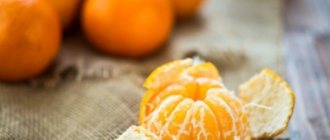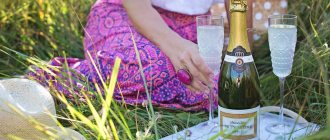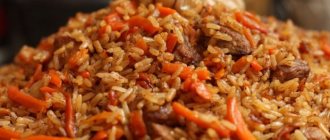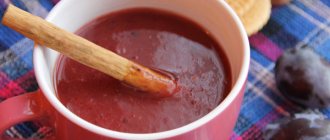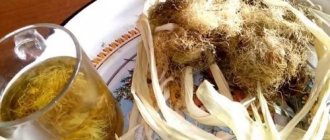The period of breastfeeding is a responsible time when every woman carefully monitors her diet so that the baby receives only high-quality products and a sufficient amount of nutrients. During lactation, you need to carefully select your diet so as not to provoke an allergic reaction in your little body. Very often mothers ask the question: “Can breastfeeding women eat blackcurrants?” This article will help you figure it out.
Is it possible or not?
Black currant is allowed during lactation, but only in limited quantities, since this berry contains a large amount of vitamin C and is an allergen. If the mother eats the berries, there is a possibility that the child will develop a rash on the body. But such a violation is not always observed. Various factors can influence the occurrence of a negative reaction in a small organism:
- The amount of food eaten.
- Berry quality.
- Individual reaction of the child's body.
The first portions should be no more than 5 berries per day. If after taking currants the baby does not have any reaction, then the amount can be increased to 100 g per day - the body’s daily need for vitamin C. If the child has rashes after taking it, you should not immediately be upset that an allergy to this product will torment him all your life, you just need to postpone the experiments for a while, then repeat everything and track the reaction.
Blackcurrant - allergenic or not? From all of the above, we can conclude that this berry is an allergen for a child only in large quantities; with the right diet and portions, a negative reaction can be completely avoided.
Contraindications for currants
Each fruit has value, however, provided that there are no acute diseases in the body. So, currants are contraindicated for:
- Ulcer.
- For hepatitis.
- With the development of thrombophlebitis.
- In the presence of high acidity of the stomach.
In addition, allergy sufferers may develop allergy attacks if they are abundantly saturated with currants.
In order for currants to bring only benefits, especially during a period such as lactation, you need to eat them thoughtfully. For example, it is necessary to monitor the amount of food eaten, and also, after introducing it into the diet, monitor the reaction of the child’s body.
The first portions should be divided into 6 berries per day, gradually increasing it, provided that there is no reaction on the child’s body.
It is worth noting that Dr. Komarov insists that a mother’s diet should be varied. This means that it is necessary to introduce all foods - vegetables and fruits, meat and dairy products, gradually and in normal quantities. Naturally, it is necessary to monitor the reaction of the small organism.
The introduction of berries should be gradual. A child's body gets used to everything very slowly. That is why for the first three months you should refrain from eating berries during this period. Moreover, currants have a laxative effect.
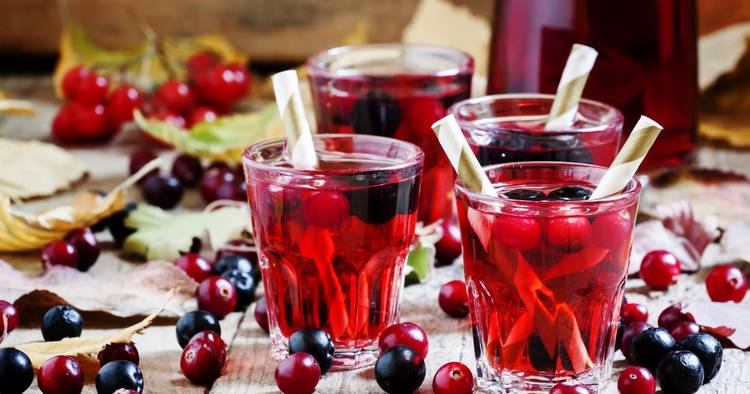
I started eating everything already in the maternity hospital. In terms of the fact that the diet had everything. Of course, I looked at the child’s reaction, stool and all that. We were born on March 19. In July, I already calmly ate all the fruits in season.
I gave birth at the end of December, the baby is very sick. And I was very weak, my hair was coming out in clumps. On top of everything else, I have kidney problems. I drank currant juice before – before pregnancy. As soon as the berry appeared in the garden, it was gradually introduced into the diet. Everything is fine for both me and the child.
Girls, be careful. Currants are unique to everyone; currants caused a terrible allergy in my child. The rash did not go away for 2 weeks.
Good for those who have never experienced allergies. But my child is an exception from this list. The first thing I realized after currants appeared in my diet is that they cause constipation. This is a terrible thing that tormented the baby. First physiologically, and then I just got used to doing an enema. Further, more - there was a rash all over my body. This despite the fact that it is hot. In short, horror. There is only one conclusion - if necessary or desired, introduce fruits, vegetables, berries into the diet - do everything gradually.
Vitamin composition
Black currant is considered a healthy and nutritious berry that can be consumed all year round to maintain the normal amount of microelements in the body. Vitamin composition:
- Contains a considerable amount of vitamin C. It occupies an honorable 4th place. To get all the benefits from eating the berry, it is recommended to eat it unripe.
- The composition also includes other vitamins: E, PP, groups B, K, pectin.
- Contains significant amounts of potassium and iron, as well as other minerals and nutritional components.
Due to the fact that the composition of this berry is so rich, black currant is not only useful during breastfeeding, but is also necessary for strengthening the immune system, small capillaries, and it can also stimulate blood formation. It is recommended to be used as an antisclerotic and antioxidant agent. But before use, it is recommended to consult a specialist to exclude various negative reactions of the child’s body.
The benefits and harms of currants

Currants are a source of vitamin C and much more. It is used for preparing fruit drinks, compotes, and desserts. They can also be consumed in their pure form.
It is noteworthy that currants belong to the Gooseberry family. It grows in Europe and Asia, but in domestic areas only red, black and white grow.
The most valuable currants are that:
- It helps strengthen the immune system.
- Helps eliminate nausea.
- Minimizes pain.
- Improves digestion.
- Regenerates cells, which is especially valuable after a cesarean section.
- Improves lactation.
The inclusion of currants in the diet for a young mother while breastfeeding will contribute to:
- Strengthening the immunity of both mother and child.
- Thanks to the beneficial properties of carotene, a woman who consumes currants every day suffers less from irritation, anxiety, and the lactation crisis is eliminated.
It is noteworthy that it is during lactation that a woman is most vulnerable both physiologically and psychoemotionally.
- The calcium contained in the composition helps restore the nail plate and hair quality.
- Currants improve the functioning of the cardiac system and eliminate myocardial disorder syndrome.
- B vitamins help improve the metabolic process.
- Currants help eliminate toxins and waste and have laxative properties.
- Has a natural anti-inflammatory effect.
Not only currant berries are useful, but also the leaves, which are brewed as tea or made into a decoction.
Benefits of berries
The benefit of currants lies not only in its vitamin composition, but also in other properties. It helps protect the body from colds, especially in the autumn-winter period. Carotene, which is part of it, improves and supports the functioning of the nervous system, stimulates restoration processes in the body, which is very necessary for women who have experienced ruptures or incisions during childbirth. It also significantly improves the condition of the skin and hair, strengthens the nail plate, which is important after pregnancy.
Rutin contained in currants normalizes the performance of the cardiovascular system, increases the elasticity of blood vessels, lowers blood pressure and stimulates the functioning of the adrenal glands. Helps reduce allergic reactions. Phytoncides can suppress the development and reproduction of pathogens and significantly strengthen the immune system. This berry also cleanses the intestines well of toxins and has a laxative effect, so it helps to overcome excess weight after childbirth. Black currant during breastfeeding can improve the taste of milk and increase its production.

What is the harm of berries?
The harm of currants lies in the high content of vitamin C, so it acts as an allergen product even for many adults. This especially applies to patients with increased sensitivity of the body. But you should understand that moderate consumption of blackcurrant while breastfeeding is quite safe, the main thing is to approach the nutrition process during this period with increased responsibility and attentiveness to the reactions of the small organism.
If the mother ignores the rashes on the child’s body after consuming this fortified berry, this can lead to a general deterioration in the baby’s condition. In such a situation, one cannot do without specialist consultation and treatment. From all of the above, we can conclude that black currant has clearly expressed benefits and harms.
It is also necessary to remember that it can also harm a nursing mother, especially one who suffers from increased blood clotting, acidity and stomach ulcers, thrombophlebitis.
How does a child’s allergy to black currant manifest?

If you do not follow nutritional recommendations during lactation, your child may have an allergic reaction to black currants. Although the benefits and harms of this berry are obvious, it is still worth taking a closer look at various rashes and other changes that can be expressed in the following symptoms:
- Itching and redness of the skin.
- Digestive disorders.
- Crust on the cheeks.
- Sleep disturbance.
- Anxiety.
If the above symptoms were identified after eating currants, it is recommended to exclude this berry from the diet. If you ignore this advice, you can harm your child and provoke an allergy to other products that are similar in composition.
It is also worth considering the fact that symptoms do not appear immediately, so you need to control your diet and eat right. Introduce any new foods gradually and in small portions. If any obvious changes occur in a child, you should immediately contact a pediatrician or dermatologist.
When is the best time to eat currants during lactation?
When breastfeeding, every mother must correctly structure her diet in order to receive only benefits from nutrition, since the health and general condition of her child depends on this.

When is the best time to start eating blackcurrants while breastfeeding? It must be remembered that in the first four months after the birth of a child, a woman is recommended to adhere to a diet and abstain from berries and fruits, especially those that belong to the group of allergens. This is explained by the fact that the small organism is still weak and has not adapted to the surrounding world.
We remember about possible allergies!
Many people know that eating berries can cause an allergic response in the body. To a greater extent, this statement will be true for berries that have a dark or bright color. At the same time, it is worth understanding that this cannot happen to every person and not in all cases. Raspberries and strawberries are at the very top of the list of allergens among berries.
But what is the reason for the development of an allergic reaction? In simple words, the body resists foreign and unknown substances, using various compounds and substances as a barrier that protects against damage. The most famous and effective among them is histamine. When a person comes into contact with something that causes an allergy repeatedly, the allergen is recognized very quickly, which leads to a more successful fight against this substance.
Currently, there is a huge variety of chemicals, household products and substances that cause quite acute allergic reactions in many people. Allergies can be recognized by several symptoms, including: skin rashes, watery eyes, difficulty breathing and runny nose.
The process of recognizing which allergen in a particular case triggers a response is quite difficult. It is no less difficult to completely rid a person of contact with him and prescribe the right therapy. Therefore, those women who have a breastfeeding child need to be extremely careful and remember that any foods in their diet that they have not encountered before must be eaten intermittently and in small portions. This is only required to determine how the baby reacts to food.
This article talks about black currants and how they should be consumed correctly while breastfeeding, because it is quite difficult to find someone who might not like this amazingly tasty berry.
Is it possible to eat dried apricots while breastfeeding?
Blackcurrant compote during breastfeeding
To prepare this drink, it is advisable to use fresh or frozen berries. You can add sugar to the compote, but you should not overdo it, as the level of glucose in the blood may increase. During lactation, it is recommended to consume only the best products.
To prepare, you will need a glass of berries, thoroughly washed under running water, and two liters of boiling water. For sweetness, you can add 1-2 tablespoons of sugar. It is recommended to cook the compote for no more than 5 minutes, which will preserve all the beneficial properties of the berry.
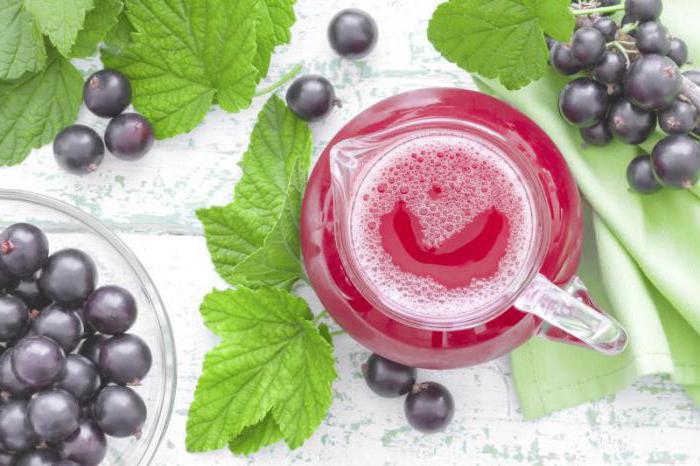
It is also recommended to use blackcurrant juice while breastfeeding, which is much healthier than compote, but more rich. It will help quench your thirst. For cooking, it is better to use only ripe berries. You can stock up on currants in the summer by freezing or canning them.
The benefits of black currant
Black currant is a tasty and aromatic berry that benefits not only the body of a nursing woman, but also expectant mothers. The currant fruit contains:
- Vitamin A - improves visual acuity, has a positive effect on the condition of nails and hair.
- B vitamins (except B12) have a positive effect on the nervous system, eliminate depression, participate in all metabolic processes in the body, and promote weight loss.
- Vitamin C is important for better absorption of iron and calcium, promotes collagen synthesis, and accelerates tissue healing.
- Vitamin E is important for conception and improving the functioning of the reproductive system, improves the function of the heart muscle, and strengthens the blood walls.
- Biotin is useful for bone and nerve tissue, normalizes the activity of sweat glands.
- Vitamin K - plays an important role in blood clotting, helps absorb and regulate calcium levels, and prevents rupture of soft tissues.
- Potassium - supports optimal functioning of body cells, normalizes blood pressure, prevents the development of stroke, and reduces the likelihood of developing oncology.
- Calcium - helps reduce weight, strengthens bone tissue, supports the functioning of the heart muscle, and prevents the development of colon cancer.
- Silicon is important for the formation of bone, cartilage and other connective tissues, increases the body's resistance, and takes part in the functioning of the nervous system.
- Cobalt - normalizes the functioning of the nervous system, improves bone cell division, and regulates metabolic processes.
- Molybdenum - increases the effectiveness of natural antioxidants, participates in processes associated with tissue respiration and the synthesis of ascorbic acid.
The calorie content of black currant per 100 g of product is only 44 kcal, which allows you to eat this berry without fear of its effect on your figure.
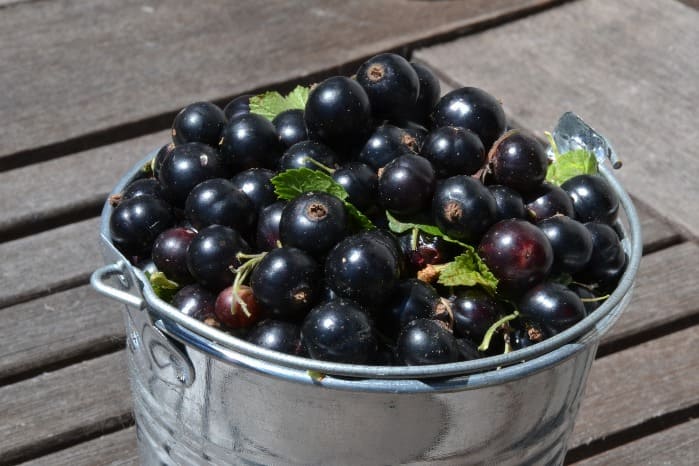
It is advisable to eat black currants during breastfeeding 3 months after birth
Such a rich chemical composition has the following beneficial properties on the human body:
- anti-inflammatory;
- diuretic;
- laxative;
- restorative, which is especially important for women whose birth was by caesarean section;
- increases appetite;
- strengthens the immune system;
- removes excess fluid from the body;
- regulates glucose levels in the bloodstream;
- enriches the body with vitamins and is an excellent prevention of vitamin deficiency;
- enhances breast milk production and improves its quality.
Blackcurrant jam for breastfeeding
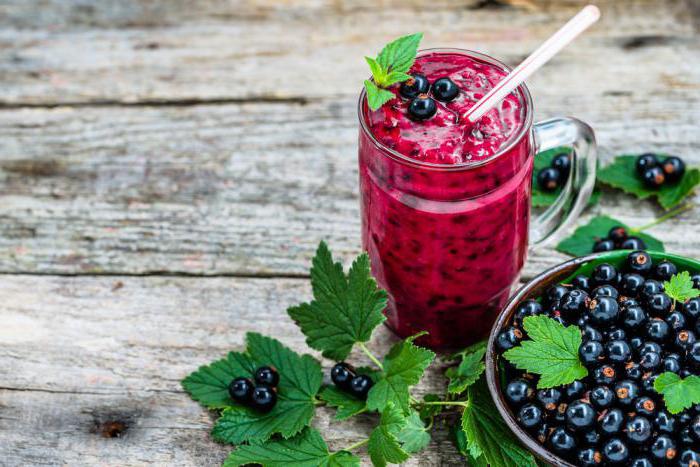
During lactation, the mother is allowed not only to drink various drinks from this berry, but also to eat jam, which should be homemade. At this time, you should not consume industrially produced products, as they contain various preservatives and other harmful components.
Currant jam can be eaten not only in winter, but also in summer. But after using it, you should also carefully monitor the child’s reaction. Preparations for the winter should be prepared only from ripe berries, preferably collected in your own garden. The finished product must be stored under the correct conditions.
In the summer, you can also make jam and it is not necessary to boil it. To do this you need currants and sugar, which is added to taste. The ingredients are ground, the jam is infused for several days. After which it is recommended to store it in a cool place. You are allowed to eat every day, but in small quantities. This jam is healthier, as all the vitamins are preserved.
How to use
In order for berries to bring maximum benefit, they must be consumed correctly:
- You need to eat currants fresh; only such berries contain the maximum amount of valuable components. The fruits can be added to food, for example, cottage cheese, cereals or yoghurts. It’s a good idea to combine it with dietary foods: cereals, grain breads and bran.
- To provide yourself with a tasty product for the winter, you can freeze them. The fruits are placed in plastic bags, hermetically sealed and quickly frozen at low temperatures. Thus, vitamins are destroyed in minimal quantities.
- During heat treatment, most of the beneficial substances are lost, but the allergenic properties also partially disappear. Jelly and compotes are made from the berries, but it is worth remembering that a large dose of sugar can harm the baby, so the sweetener is used minimally.
- Some people like compote without sugar; it perfectly quenches thirst and is also pleasant to the taste.
- To preserve the valuable qualities of the berries, it is better to mash the fresh fruits a little and simply brew them with boiling water, this way they undergo the least influence of temperatures, and some of the allergens will also be lost. The drink must be given time to brew, after which it can be drunk.
As for jam and preserves, this delicacy cannot be compared with a fresh product. It contains a large amount of sugar, it has endured prolonged exposure to high temperatures, so its benefits are questionable, but it can cause significant harm: cause digestive upset or diathesis in infants.
Currant leaves also have beneficial properties. When brewed, you get a surprisingly aromatic and tasty drink that strengthens the immune system, tones, and improves blood composition. An infusion based on currant leaves can be drunk even with gastritis, so 2-3 leaves in a teapot will give ordinary tea a unique taste and smell, and will give mom moments of pleasure and a good mood.
